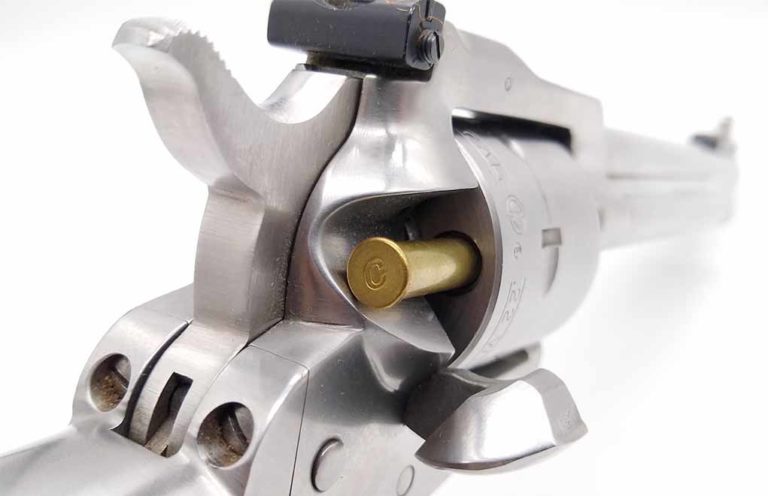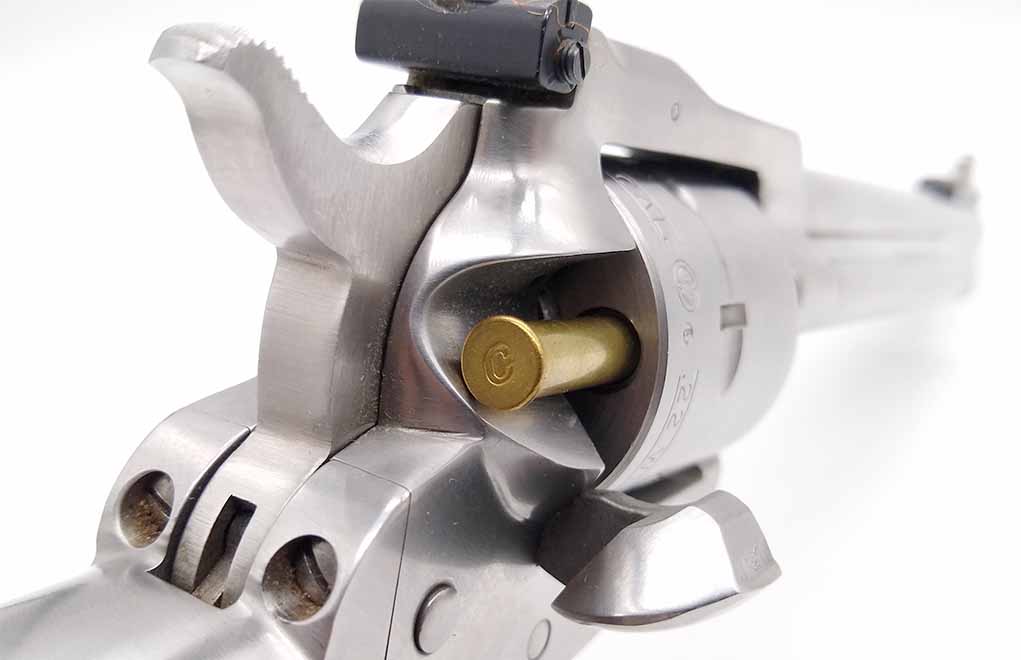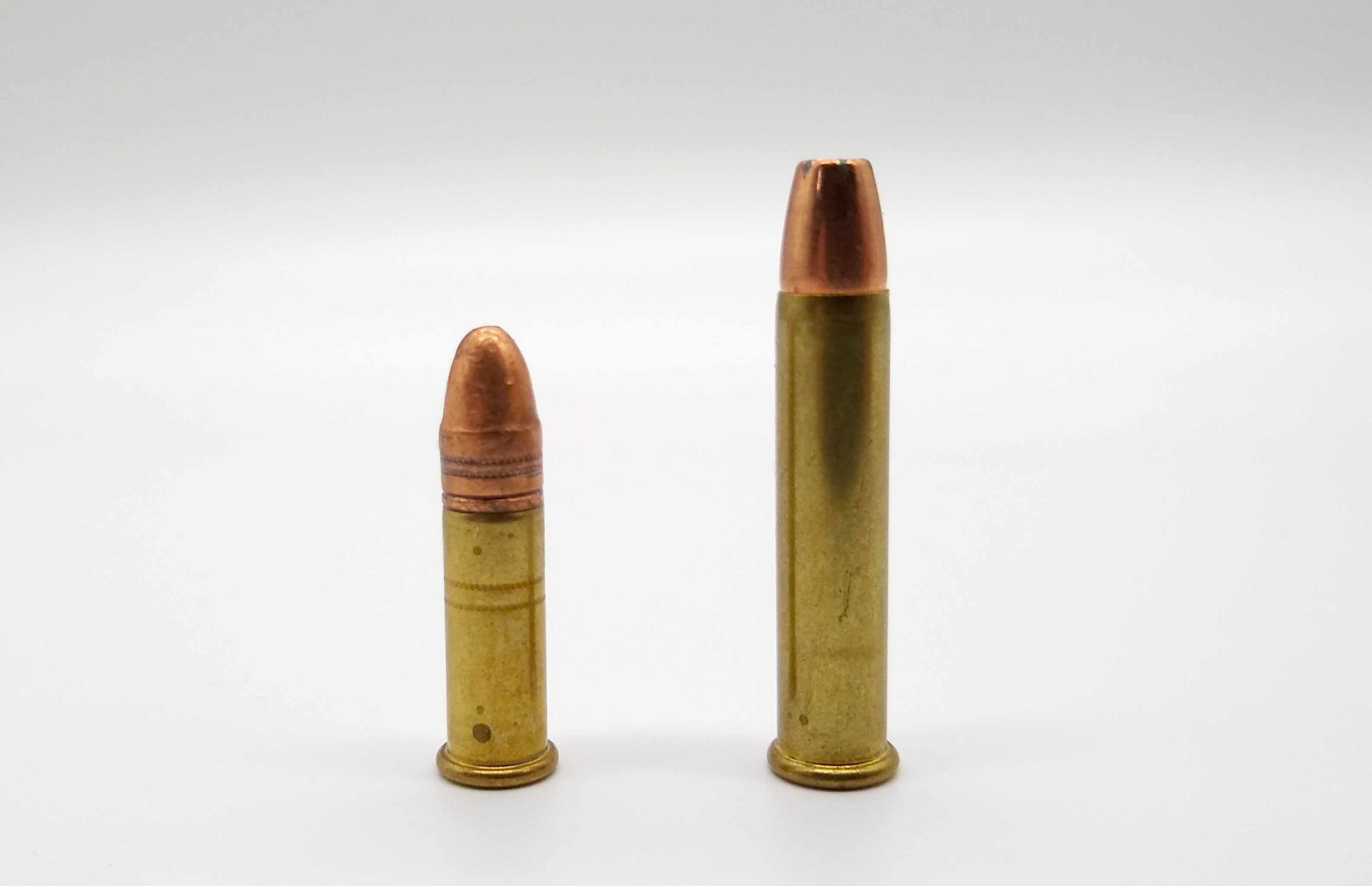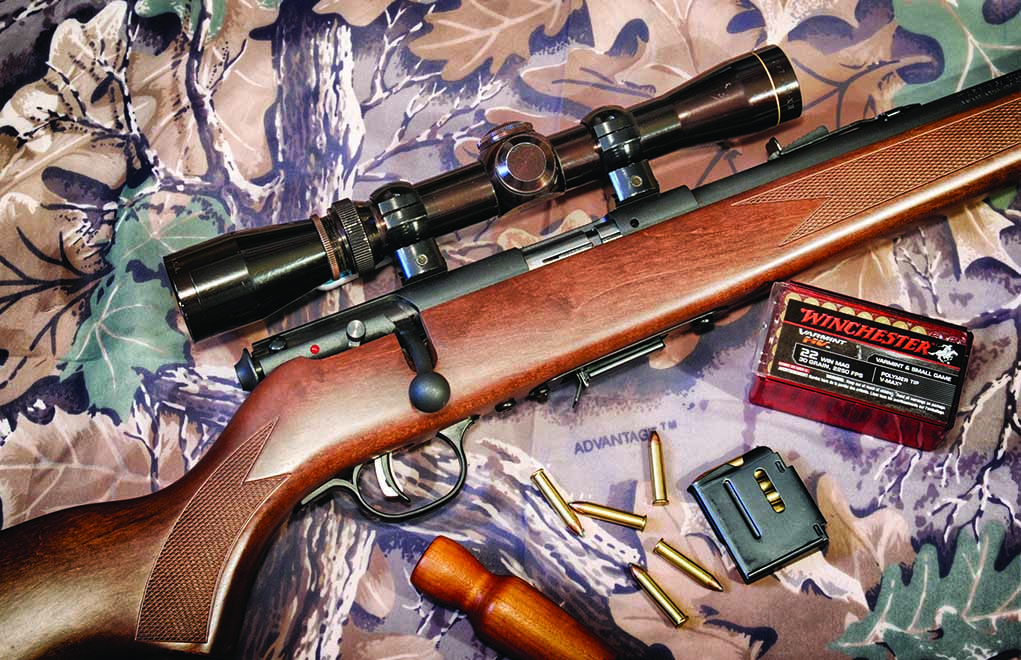
No argument, the .22 Magnum is top dog when it comes to .22 rimfire cartridges. But what does that add up to?
What Are the .22 Magnum's Assets:
- The .22 Mag can propel a 40-grain bullet 1,900 fps at the muzzle.
- At this velocity, the muzzle energy is 325 ft-lbs.
- Its recoil is mild as is its report.
- When it comes to rimfire cartridges, it's among the best varmint options.
- Potentially too much for game bound for the pot.
The year is 1959, Dwight Eisenhower is President of the United States, the first American astronauts are announced and the nation’s magnum cartridge craze is in full swing. The last is an apt endeavor for an era that started shooting for the moon, and it left nearly no caliber untouched. But this particular year saw the birth of one of the most beloved if not peculiar magnums take root. By this, I mean the .22 Magnum.

Smashing ballistics, velocity to spare, shootable as any other rimfire, the snappy cartridge was the epitome of the bigger, better, faster post-war America. Yet, there’s a conundrum engineered into the .22 Magnum, most folks only realized much after the fact. It certainly moves like the dickens and hits, relatively speaking, like a bone-rubbed hickory stick.
Great. In practical use, what the heck is it good for?
From Whence The .22 Magnum Came
Breaking down a cartridge, it’s always a worthwhile endeavor to dig to its roots. With the .22 Magnum, in some respects, the concept of a hot-rocks .22 round wasn’t anything particularly new when it hit the scene.
Properly known as the .22 Winchester Magnum Rimfire (.22 Magnum or .22 WMR for short), the cartridge was essentially an elongated version of the .22 Winchester Rimfire (or if you like, its twin, the .22 Remington Special). The older cartridge was minted around 1890, and as noted by Todd Woodard in Cartridges of the World, 16th Edition, was the first notable improvement in the killing power of various .22 rimfires. Never considered as accurate as the .22 LR, it was much more reliable at taking game at ranges where the Long Rifle became spotty—around 75 yards give or take.
As is common in straight-walled cartridges—rimfire and centerfire—the improved range of the .22 WRF was thanks to case elongation. The designers cajoled diameter as well, but that was a matter of getting the case to accept the whole diameter of the bullet when seating. Anyhow, the larger case gave the .22 WRF roughly a 200 fps edge over the Long Rifle. Not bad for tacking on .352-inch more brass. But in the mid-20th Century, Winchester figured it could do better.
Keeping the same diameter of the .22 WRF, the company further elongated the case to 1.055 inches to create the .22 Magnum. Furthermore, they topped the cartridge with a much sturdier jacketed bullet as compared to the solid lead projectiles generally found on the Rimfire and Long Rifle. The results were stunning.

Loaded with a 40-grain bullet—the original choice and among the most popular today—and depending on the firearm launching it, the cartridge produced velocities in the neighborhood of 1,900 fps. Even in the more abbreviated barrels of handguns the cartridge still shined. Send it through a revolver or pistol with a 4-inch barrel or longer and it will generally outperform any other .22 rimfire shot from a rifle. No matter how you slice it, the .22 Magnum moves.
Get More .22 Magnum Info:
- .22 Magnum Pistol: What’s Available In Semi-Auto
- .22 Magnum Revolver: 5 Excellent Options For The Hunt
- .22 WMR Vs .22 LR: Application Defines This Rimfire Rumble
- Best .22 Magnum Rifle Options To Put Pests On Ice
- Top .22 Magnum Ammo Options For All Applications
.22 WMR Ballistics
So, what does this add up to? We needn't parse numbers down to a gnat’s ass between cartridges that have in most cases 600 fps or more separating them, as does the .22 LR and .22 Mag. A rudimentary understanding of ballistics should tell you the .22 Mag shoots further and flatter than its predecessor and hits harder. Which it does.
As for practical application, the .22 Magnum is a viable hunting option past 100 yards, flirting the 130-yard mark in the hands of a skilled hunter. Target shooters can expect to push the round further—say the 150-yard range. Though, much further and things start to break down, with most loads going sub-sonic at or around this distance. Still, not shabby for a rimfire with a little to no recoil.
So there you have it, the .22 Magnum is the king of all .22s, hands down. Right? There’s always a “but” to these things and there are a couple of noteworthy ones with hot small-bore rimfire.
.22 Mag For Self Defense
Given it’s a bit of a hot topic, we should touch on this. Though, a section of a greater article is not the best place to discuss a multifaceted subject, such as is the .22 Magnum good for self-defense. If you’re looking for a more nuanced discussion, I’d suggest Richard Mann’s piece on the .22 Long Rifle for self-defense, which digs much deeper into the pros and cons and is applicable to the .22 Magnum.
In brief, it’s safe to say the .22 Magnum isn’t the first choice as a self-defense cartridge. Certainly, it’s more viable than the .22 Long Rifle and it is deadly. However, it’s questionable if it's wise to rely on the .22 Mag to neutralize a threat to your life. Is it better than nothing? Of course. And for some people it might be the only option at hand. But for the vast majority of shooters, sticking with defensive cartridges with a better track record in this role—.380 ACP on up—is the more prudent move.
Target Shooting And Plinking
The .22 Magnum is positively lights-out accurate in most guns, which makes it an attractive target or competition option. Heck, if you’ve got the range to utilize, it's also loads of fun in the role of the plinker. However, overtaking the more established .22 Long Rifle as casual and competitive bullseye wizard isn’t likely to happen anytime soon. It’s not a matter of performance, but price. Whereas .22 LR ammo can dip below a dime per trigger pull, in most cases .22 Magnum runs more than double that. Half the fun at twice the price isn’t typically a huge selling point.
Hunting The .22 Magnum
There’s little arguing the cartridge will kill most varmint-sized game graveyard dead. But does a hunter really need them that dead? The issue most contend with when hunting the .22 Magnum is damage to the meat, which is typically more extensive than what is found with the Long Rifle. This is particularly acute with smaller game, such as squirrels, but is even an issue with larger critters, such as cottontail rabbits and hares.

This isn’t to say the .22 Magnum isn’t an adept game getter. It is. Many enjoy the greater range the cartridge allots, and are quite skilled in pulling off a long-shot that leaves the meat edible. But that’s not every small-game hunter. Some cherish the tight confines of a shelterbelt and the close and quick shot. If that’s the way your tastes run, the .22 Magnum might be overkill. Just something to consider when analyzing if the cartridge fits your style of hunting.
Quite A Pest
OK then, if the cartridge isn’t hot for self-defense, too expensive for plinking and blood shots small game, where does it excel exactly? The answer is simple, hunting—just not for things you generally eat.
When it comes to pest control the .22 Magnum stands nearly alone. Its low recoil makes fast follow-ups possible. Its range is enough to catch a critter at the edge of your property. It’s very polite in the report department, keeping nitpicky neighbors off your back. And its terminal ballistics are, in a word, overwhelming. It’s the complete package.
Everything from prairie dogs to skunks, woodchucks and raccoons are mincemeat at the receiving end of the .22 Magnum. Even chicken coop-raiding foxes and coyotes are little more than pelts versus the cartridge. Though, I don’t know if I’d go so far as to call the .22 Mag a dedicated predator cartridge. Just an occasional one. For many of us, that’s all it needs to be.
Parting Shot
To be sure, the .22 Magnum isn’t a jack-of-all-trades like its cousin the .22 Long Rifle. Yet what it does do, it does well. With one at hand, gardens will remain undisturbed and hen houses will go un-molested.
More About .22 Ammo
- Top Picks for the Best .22LR Pistol Ammo Available Today
- What’s Best for Your Shooting Needs? .22 WMR Ammo vs .22LR
- .22 Remington Special – The History and Applications of a Classic Cartridge

Next Step: Get your FREE Printable Target Pack
Enhance your shooting precision with our 62 MOA Targets, perfect for rifles and handguns. Crafted in collaboration with Storm Tactical for accuracy and versatility.
Subscribe to the Gun Digest email newsletter and get your downloadable target pack sent straight to your inbox. Stay updated with the latest firearms info in the industry.

![Best Concealed Carry Guns In 2025 [Field Tested] Wilson Combat EDC X9S 1](https://gundigest.com/wp-content/uploads/Wilson-Combat-EDC-X9S-1-324x160.jpg)


![Best 9mm Carbine: Affordable PCCs [Tested] Ruger Carbine Shooting](https://gundigest.com/wp-content/uploads/Ruger-Carbine-Shooting-100x70.jpg)
![Best AR-15: Top Options Available Today [Field Tested] Harrington and Richardson PSA XM177E2 feature](https://gundigest.com/wp-content/uploads/Harrington-and-Richardson-PSA-XM177E2-feature-100x70.jpg)

I question there is no self defense application. Do you want to kill someone or stop the threat? I dont want to kill anyone. 1900 fps and minimal recoil for accurate repeat fire is better than a 9mm or 45 cal lighting up the night sky with each round fired. If the attacker does not go down you have 14 more rounds. How much more does one need?
In 1962 I bought what I thought I bought a 22 pistol from Western Auto in Jacksonville, Ark. I was a 22 but a magnum. This was a cylinder type pistol and when I ejected my empty shells, they were split. I did not know that I had bought a 22 Mag pistol. I kept the gun and got to be very accurate and the pistol was great. I do not remember the brand of pistol and as years went by I traded it off. It was my only gun I used it for rabbit huntingl
I’ve seen women trained w 9 mm handguns who never got used to the sound or recoil. Shooting all over the place. Better to be accurate and comfortable than have “big guns” A 22 mag with 30 shells? Yea.
I have carried a Ruger New Model Single-Six with the .22 mag cylinder in it for 50 years. It is a tack driver, bowling pins at 50 yards don’t stand a chance, and has put the finishing touches on a plethora of whitetail deer. A deer that is down but hasn’t given up the ghost doesn’t need to be shot in the head with a .30-06 from point blank range. This is where that .22 mag excels for me.
you are in a state that allows that…many do not…I agree with your assessment it is a dandy coup de grace round.